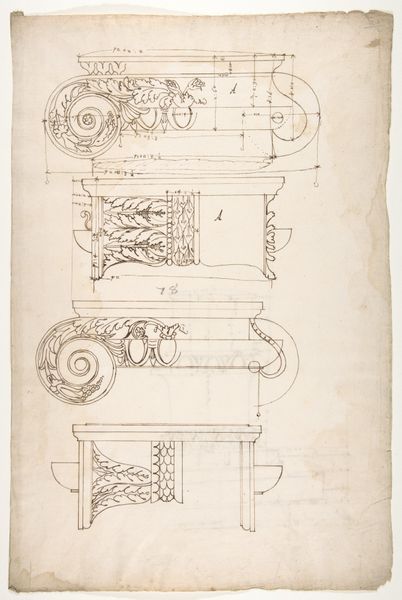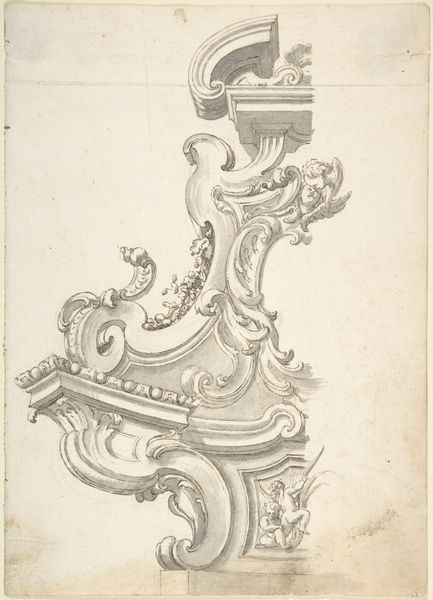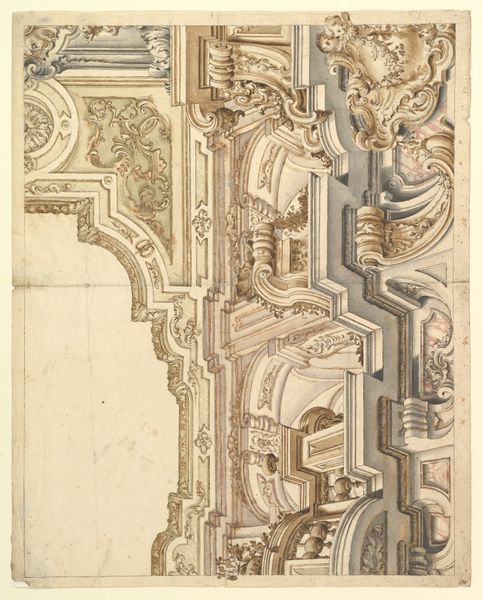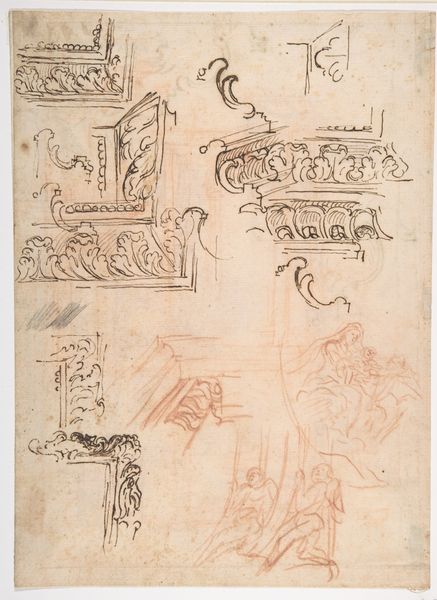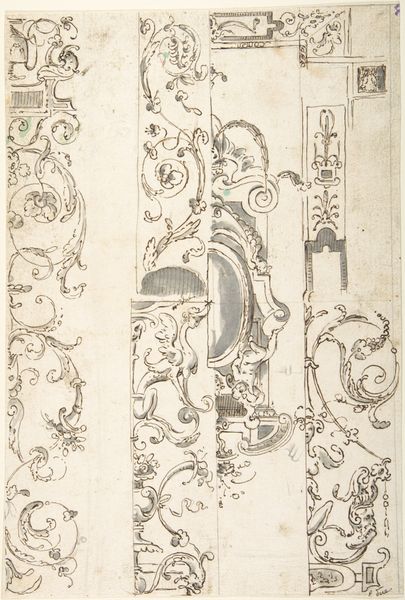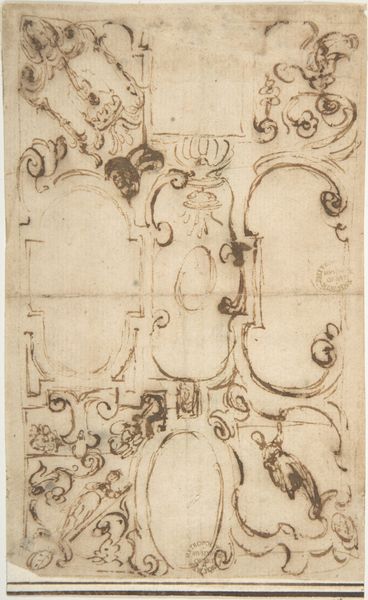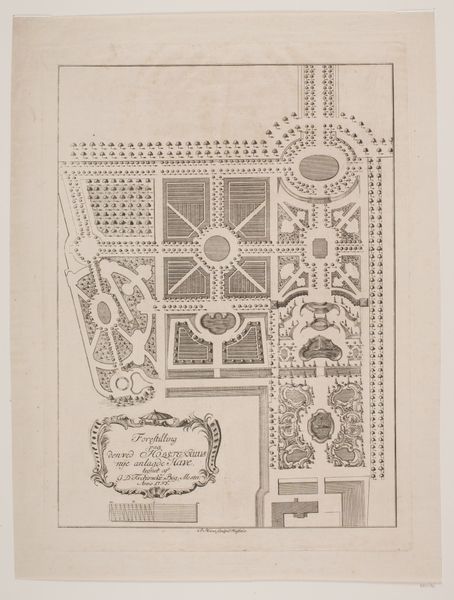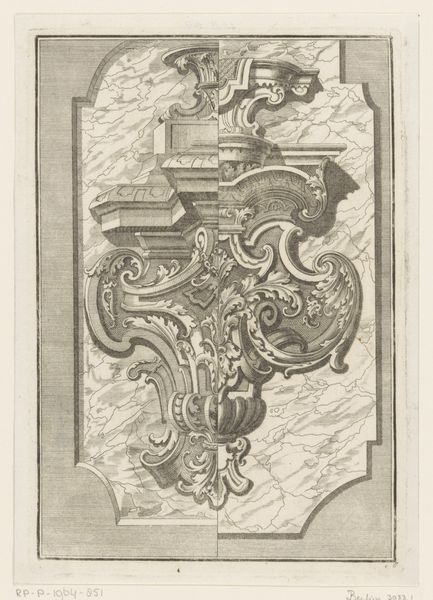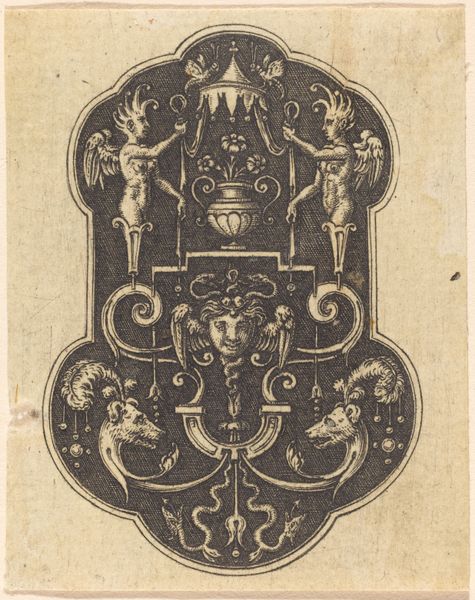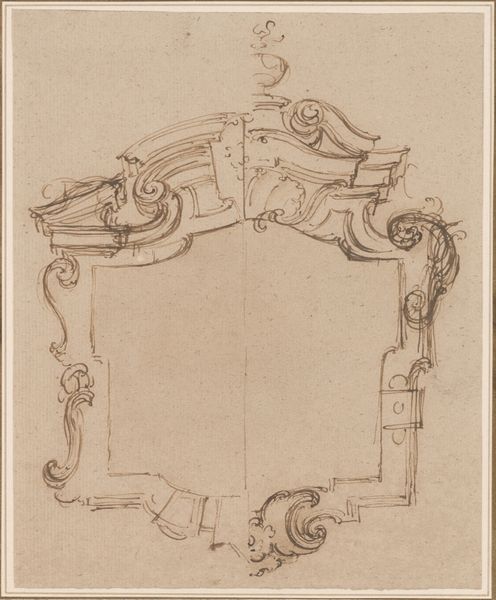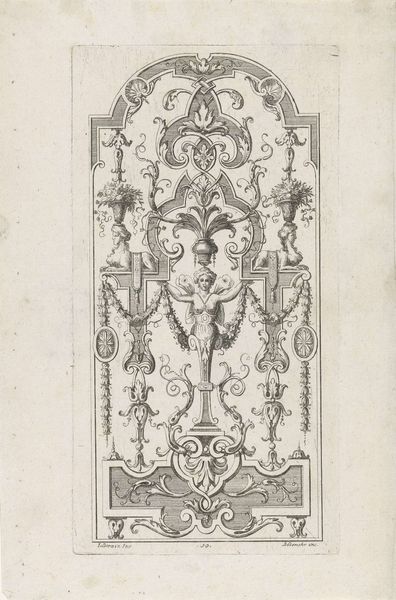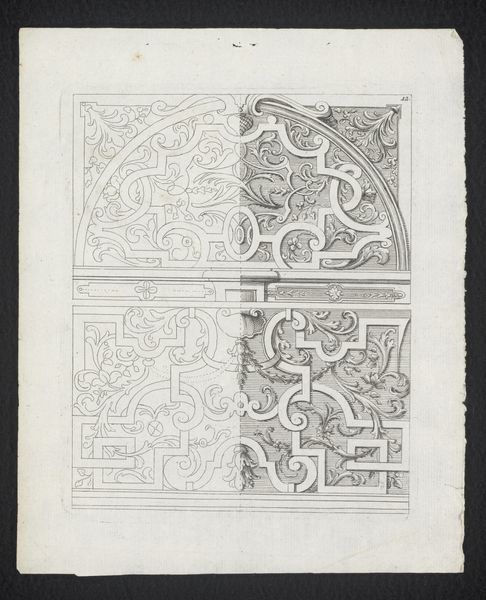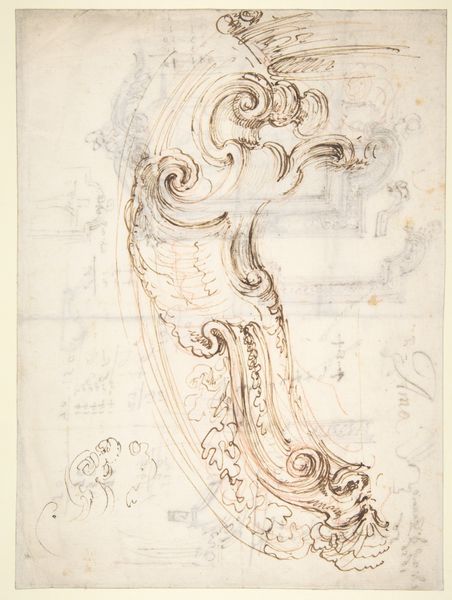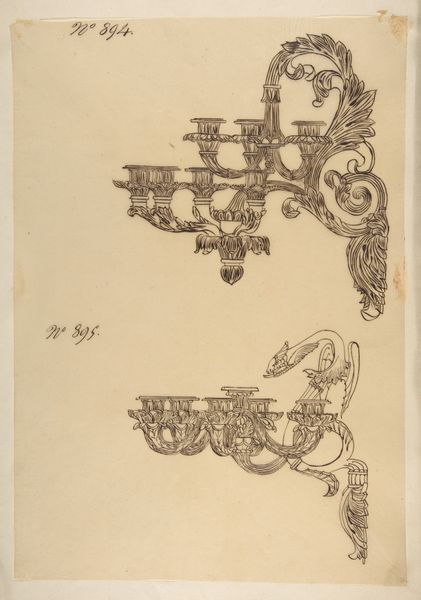
Two One Half Variant Designs for a Catafalque 1700 - 1780
0:00
0:00
drawing, print, ink, architecture
#
drawing
#
baroque
# print
#
etching
#
form
#
ink
#
architecture
Dimensions: sheet: 12 1/2 x 7 13/16 in. (31.8 x 19.9 cm)
Copyright: Public Domain
Curator: At first glance, this image strikes me as imposing, and grand. There is also something ghostly or ephemeral, heightened by the faded inks and layered textures of the artwork. Editor: This is "Two One Half Variant Designs for a Catafalque" created by an anonymous artist, sometime between 1700 and 1780. It's currently housed at the Metropolitan Museum of Art. The piece uses ink, etching and drawing on what appears to be laid paper. The title alone points to a fascinating engagement with Baroque sensibilities around death, spectacle, and display. Curator: Yes, Baroque is the perfect descriptor. Looking closer at the composition, the symmetrical structure overlaid with extravagant, curving forms speaks volumes about the period. Notice how the ordered rows of candleholders play against the elaborate, almost theatrical base. Editor: Indeed, what's crucial is to consider how such catafalques were constructed, decorated, and received. This would have involved skilled labor: carpenters, gilders, textile workers, and so on. Death was a moment for not only mourning, but conspicuous displays of wealth and power. These are ephemeral constructions of significance for social display. Curator: Precisely, there's a powerful tension. These ink and etched lines represent something that is materially substantial yet simultaneously designed for a fleeting moment of public mourning. The design elements like the cascading tiers, offer an interesting study in geometric patterns combined with baroque ornamentation. Editor: Absolutely, understanding the design process behind this piece is so informative to the material reality. Each scroll and flourish would need skilled artisans. And for what end? Commemoration yes, but it is as much a commentary on status. Curator: The medium allows for us to access how social systems function—where wealth gets deployed, how skilled labor participates in the visual landscape, what sort of politics might have been at play when one displays excess. The visual rhythm is actually tied into the social fabric. Editor: Considering the architectural aspect within a drawing expands what we deem craft and architectural structure itself. This isn't just a preliminary sketch; it reflects the era's worldview materialized through complex artistry. Curator: I agree. It reminds us that art—even in the form of a design for something as temporary as a catafalque—offers enduring insights into the society that created it. It's an intriguing lens to see process made physical and the culture of Baroque visual language at work. Editor: This exploration of the form, composition, and socio-historical context really deepens my understanding—thank you for the insightful visual and process exploration.
Comments
No comments
Be the first to comment and join the conversation on the ultimate creative platform.
